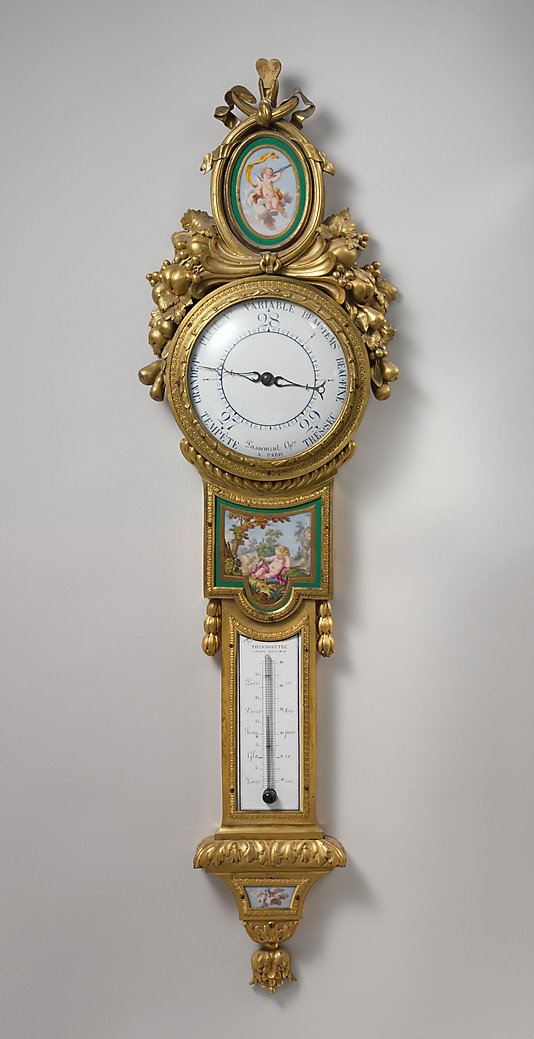The clock face with enamelled signature Martinos Paria, the barometer with enamelled signature Passement Au Louvre
cf. Geoffrey de Bellaigue, The James A. de Rothschild Collection at Waddesdon Manor: Furniture, Clocks and Gilt Bronzes, Fribourg, 1976, Vol. I, no.1, pp. 44-47, for an 18th century model
Daniel Alcouffe et al., Gilt Bronzes in the Louvre, p. 140-141, for an illustration of a similar 18th century model
The original barometer-thermometer was designed by the engineer Claude-Siméon Passemant (1702-1769). Passemant was famous for creating the astronomical clock that bears his name, which is today on display in Versailles. Presented to King Louis XV in 1750, this grand, six-foot-tall clock set official time in France for the first time in the country’s history. Mme du Barry’s own smaller, but no less exquisite, barometer-thermometer reflects the taste for timepieces and other scientific equipment that developed from the unveiling of this first astronomical clock. Dated to 1769, it still survives, now in the Metropolitan Museum of Art, New York.
Original 18th-century barometer-thermometers of this type are relatively rare survivals today. Other examples are in the permanent collection of the Musée du Louvre (from 1776), the Calouste Gulbenkian Foundation, Lisbon (from 1774), and at Waddesdon Manor (this one missing its thermometer).













